AI Perception Gap: Unlocking Biology's Secrets With AlphaFold
A New Era of Biological Discovery
What if the recipe for eradicating all disease already exists — but we just don’t know where to look?
The world is riddled with preventable disease. Heart disease, cancer, neurodegenerative disorders, and type 2 diabetes claim millions of lives every year. If you’ve ever watched a loved one deteriorate from Alzheimer’s or cancer, you know the pain goes far beyond numbers.
At the heart of these diseases lies a common culprit: proteins. To cure and prevent diseases, we must understand thousands of proteins, their functions, and their structures. Finding the structure of a single protein used to take a PhD student their entire PhD — four to five years of painstaking work. The global effort of scientists over four decades uncovered the structures of just 0.075% of the 200 million proteins in the observed protein universe.
Enter Google DeepMind, a research company led by British-born Sir Demis Hassabis, a former chess prodigy turned AI visionary who, in 2024, was knighted for “services to artificial intelligence”. After years of building AI that could master board games at superhuman level, he directed DeepMind’s attention to structural biology. Using AI, his team reduced finding the structure of a protein from five years to a few seconds. Hailed by some as the greatest scientific breakthrough ever, their work has unlocked countless doors in medicine. Demis truly believes that with DeepMind’s AI already in the hands of every biologist worldwide, we will eradicate all disease on Earth.
Why Solve the Protein Folding Problem?
What was the exact problem Demis and DeepMind solved?
The protein folding problem.
Before introducing you to the protein folding problem, I’ll explain why solving it is the most significant structural biology breakthrough ever. It is a root node problem. Solve it, and an entire tree of challenges — in medicine, material science, and beyond — becomes easier to tackle.
For example, by solving protein folding, DeepMind has unlocked drug discovery. Most drugs work by binding, like a lock and key, to specific proteins — such as enzymes, receptors, ion channels, or transport proteins — to alter their function. To design effective drugs, scientists need to first map the structure of these proteins to identify binding sites. Just as crucial is understanding the structure of other proteins in the body to ensure the drug binds only to its intended target, minimising harmful side effects.
Before DeepMind’s breakthrough, the protein folding problem — marked amber because it was theoretically solvable, but yet to be solved — remained a critical bottleneck, blocking breakthroughs in fields that depended on it.
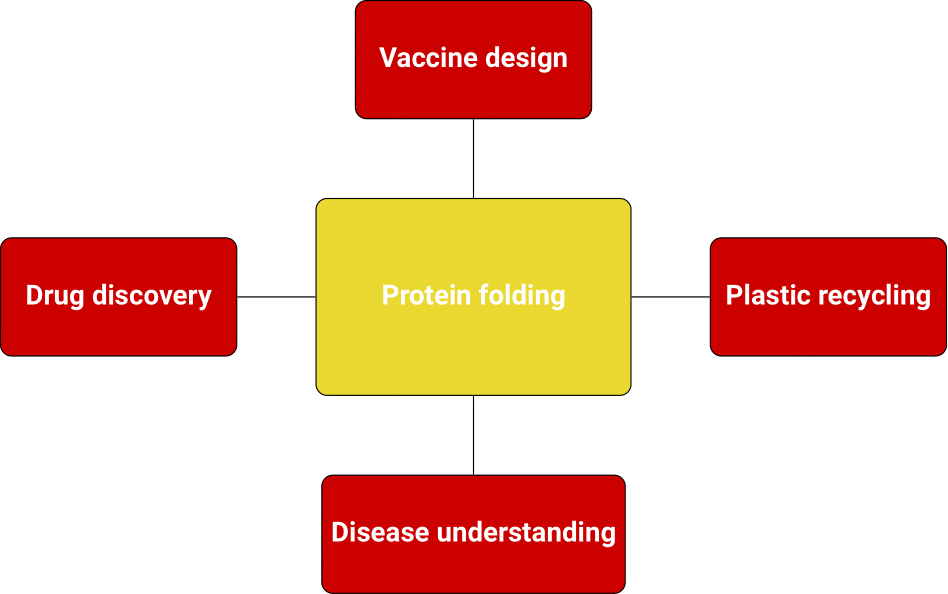
By solving the protein folding problem, dependencies have transitioned from near-impossible to solvable.
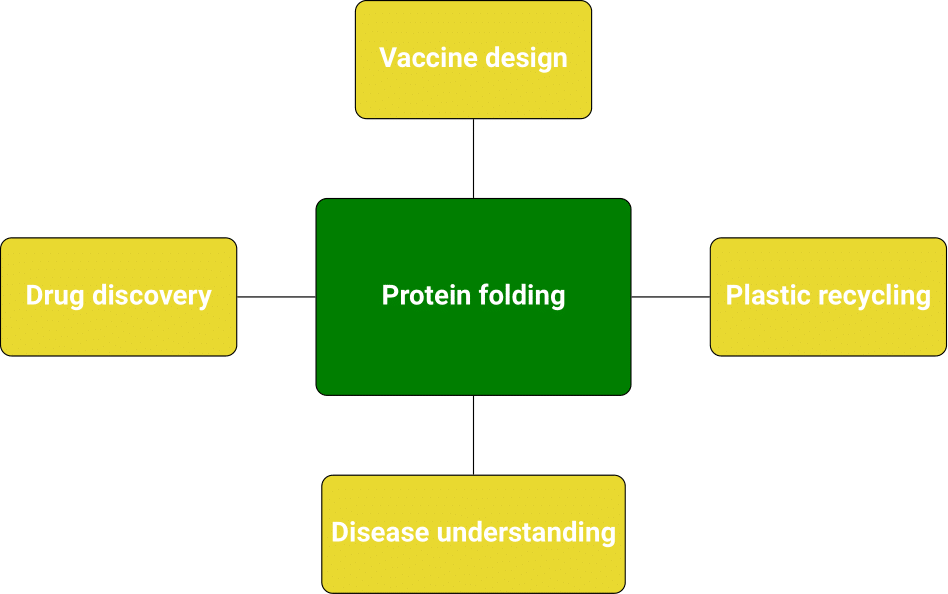
The use of the solved–solvable–impossible framework in these diagrams is an intentional oversimplification. Scientists weren’t completely in the dark before; progress was still made in drug discovery, disease understanding, and many other fields. But, progress was slow — after all, they only had structural knowledge of 0.075% of the protein universe. Now, armed with a complete structural understanding, these fields are accelerating into uncharted territory at an unprecedented pace.
Anyhow, let’s address the elephant in the room — what is the protein folding problem?
The 50-Year Mystery: Protein Folding
Proteins are made of amino acids. In nature, a sequence of amino acids folds intricately to create a 3D shape — a protein — like a string of beads forming a ball. A protein’s overall shape depends on the attractions and repulsions between all the atoms in the amino acids its made of. Some want to be together, some don’t. With all these chemical interactions at play, the number of possible fold configurations for a single protein is enormous — greater than the number of atoms in the observable universe.
When Christian Anfinsen won the 1972 Nobel Prize in Chemistry, he proposed a bold idea — given an amino acid sequence, it should be possible to predict its final structure. Biologists called this the protein folding problem, and for fifty years, it stood as one of the greatest unsolved mysteries in science. With \(10^{300}\) possible fold configurations for an average protein (a staggering 301-digit number!), no human brain could hope to solve it. But where human cognition met its limits, Demis saw only inevitability — AI would succeed where biology had stalled.
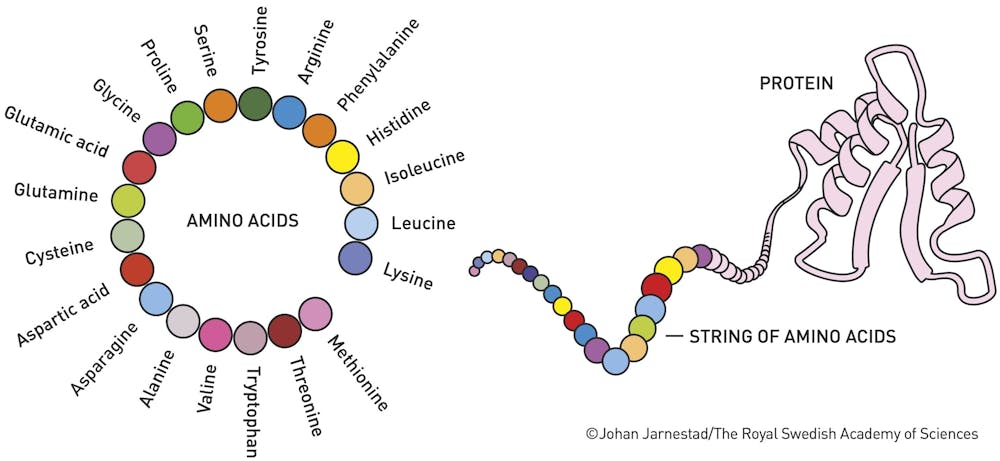
How AI Solved the Unsolvable
After mastering board games by defeating world champions with AI during the 2010s, DeepMind looked for their next ticket to the world stage. In 2017, Demis hired Dr John Jumper — a chemist with a background in protein structure. Over the next five years, AI researchers at DeepMind tackled biology’s grand challenge, with repurposed board game algorithms.
Rather than selecting moves on a board, DeepMind’s protein-folding AI, AlphaFold, deciphered the fundamental rules governing protein folding. By analysing 150,000 protein structures catalogued by biologists over the last forty years, AlphaFold uncovered hidden patterns of attraction and repulsion within amino acid sequences. Now, with this unprecedented insight, it can predict a protein’s structure in seconds.
AlphaFold has now mapped the structures of over 200 million proteins. If solving a single structure through traditional methods took five years, then in sheer research output, DeepMind has completed a staggering 1 billion PhD years. But they didn’t keep this knowledge locked away — instead, they made every structure freely available in a vast public database. Today, rather than spending six figures hiring a PhD student on an arduous, years-long endeavor, biologists can retrieve a protein’s structure effortlessly via a Google search. DeepMind has elevated the entire scientific community, placing them atop the shoulders of a new kind of giant. That giant is AlphaFold, and it is as giant as they come.
Beyond Protein Folding: AI’s Expanding Role
AI-Powered Drug Discovery
“I believe we are on the cusp of an incredible new era of biological and medical research,” said Demis on the Big Technology podcast.
To bring this vision to life, DeepMind launched AlphaFold spinout Isomorphic Labs, with Demis at the helm, to revolutionise drug discovery. Isomorphic isn’t stopping at protein structures — it aims to simulate entire cells, unlocking unprecedented possibilities. Instead of painstakingly growing cells in a lab and observing microscopic reactions, scientists will soon be able to inject virtual cells with drug candidates (they’re training AI to identify promising drug candidates too!) and observe the results — all within a computer simulation. With the power to test millions of candidates in seconds, the pace of drug discovery is set to shatter every existing limit.
The final steps of drug discovery will remain unchanged; AI will not replace the need for laboratory validation or clinical trials. But with AI eliminating dead-end compounds early, the process will be dramatically faster and more cost-effective. This shift, which Demis believes the algorithms for which are just five years away, will mark a turning point for the entire pharmaceutical industry. He delves into the implications in a must-hear two-minute segment on the Big Technology podcast.
Beyond Medicine: Food Security, Plastic Recycling & More
AlphaFold is more than a breakthrough in medicine — it is a catalyst for change across industries. Below, I include compelling video summaries of its impact on agriculture and plastic recycling, along with a link to more groundbreaking applications shared by AlphaFold.

A Scientific Earthquake: AlphaFold’s Legacy
If AlphaFold is so groundbreaking, why haven’t I heard about it before?
Because protein structure is a root node problem. If we cure cancer tomorrow, the news would be inescapable. But AlphaFold operates further upstream — solving a fundamental but less flashy piece of the puzzle. Take the BBC’s homepage today, for example. It featured an article titled “Scientists discover new part of the immune system”. No mention of AI, no mention of AlphaFold. Yet, did the scientists behind the discovery use AlphaFold, and did their paper join the 32,000 others that have cited DeepMind’s groundbreaking study in the past four years? Absolutely.
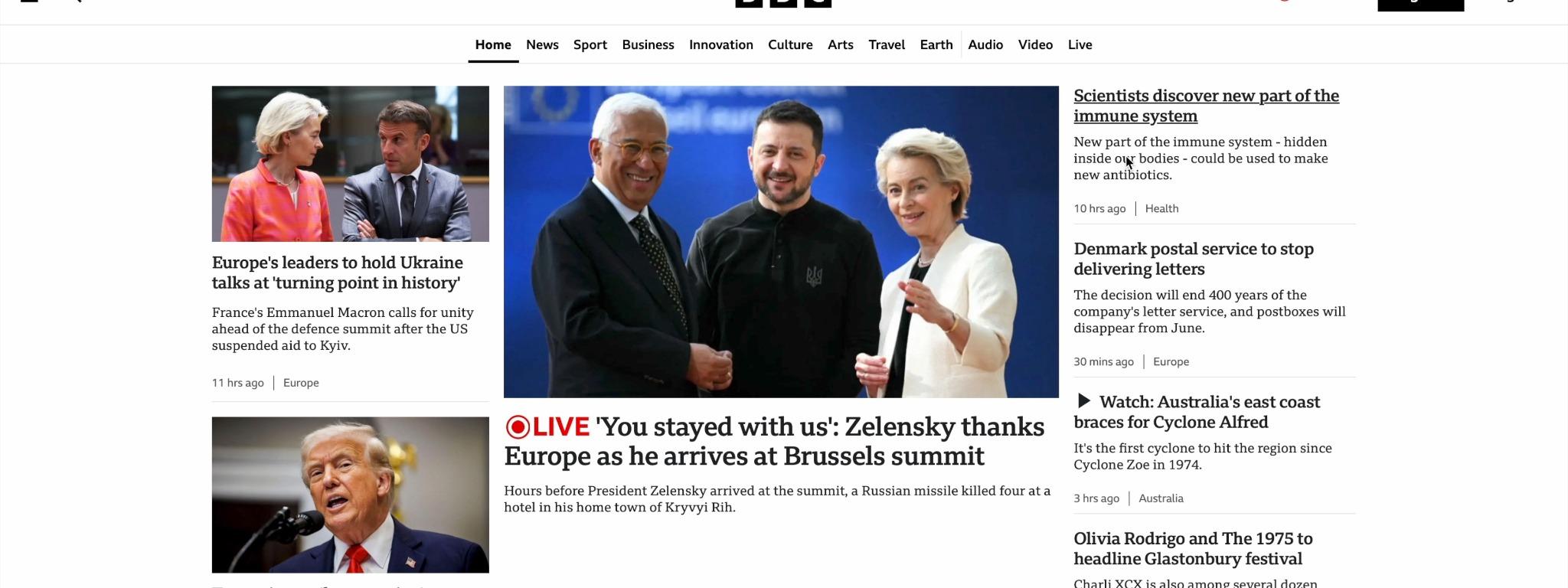
The AlphaFold protein database has been accessed by over 2 million researchers across 190 countries – every single biologist in the world, plus a few hundred thousand from other fields. This isn’t an incremental improvement — it’s an earthquake, a rewriting of the rules. That’s why Forbes declared it “The Most Important Achievement in AI—Ever”. That’s why Science, one of the most prestigious journals in the world, made an AlphaFold-inspired discovery a cover story. And that’s why Sir Demis Hassabis and Dr John Jumper were awarded the 2024 Nobel Prize in Chemistry.
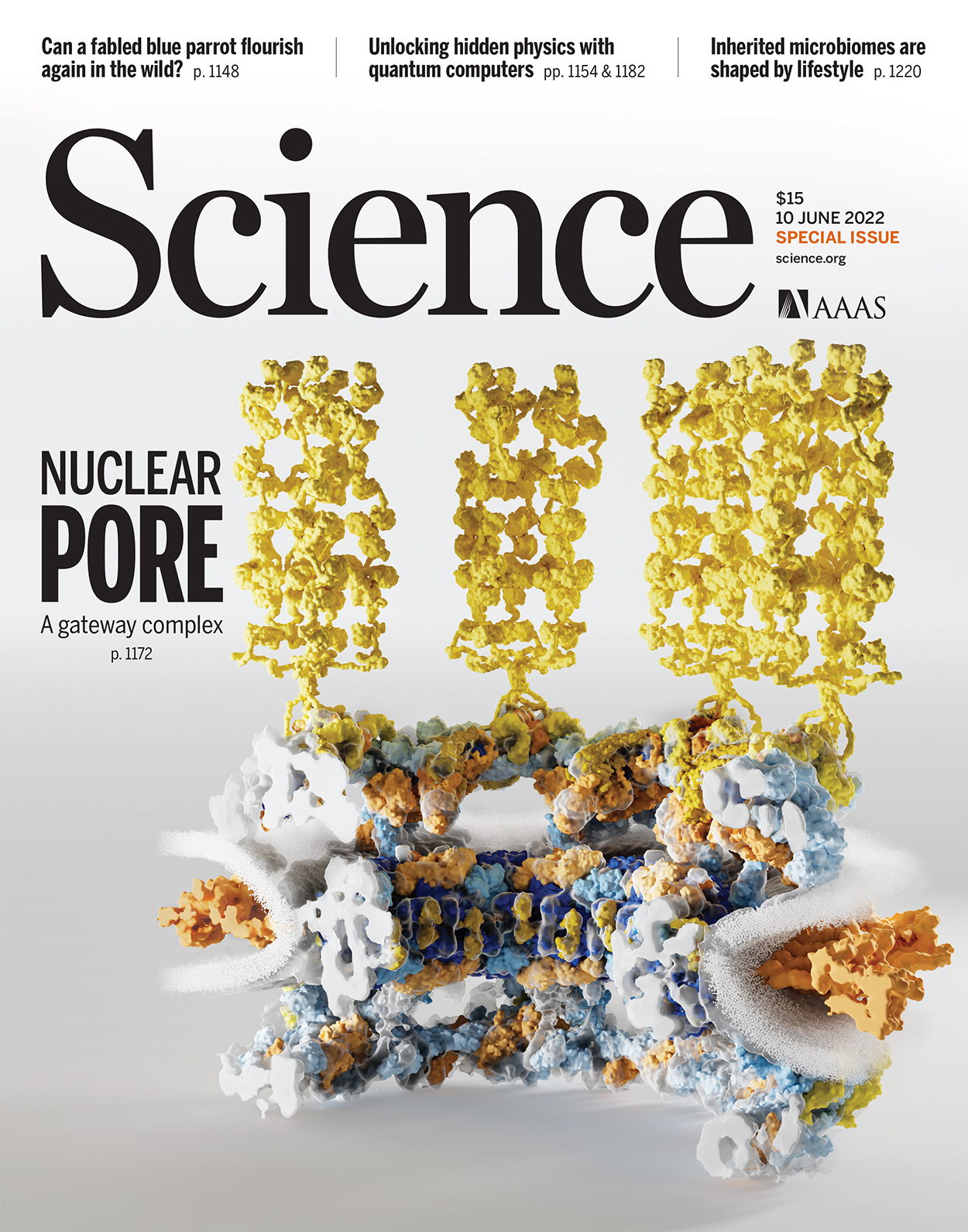
Enjoy Reading This Article?
Here are some more articles you might like to read next: